Designing for the future
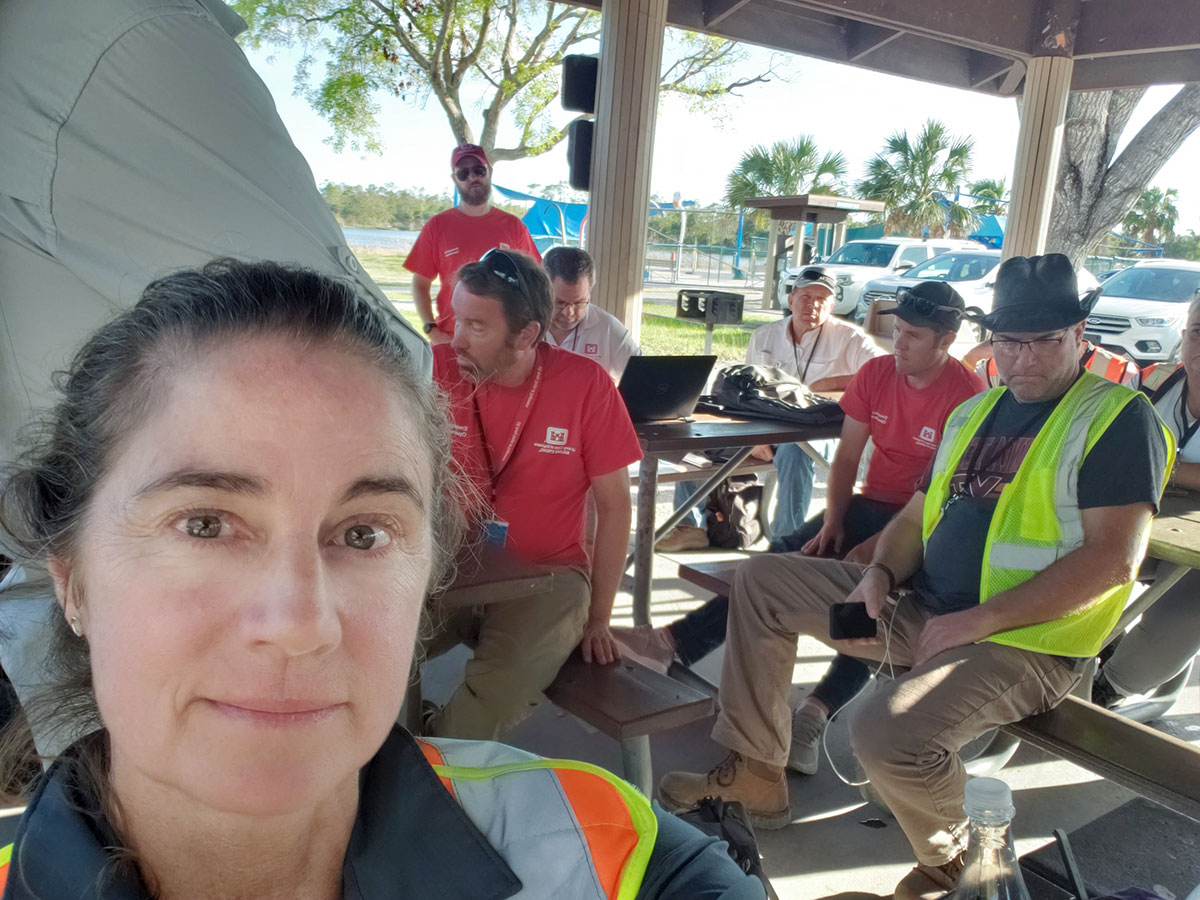
Hurricane disaster work strengthens architect’s activism
BY MARY ANN KOENIG
Crossing the state before dawn, Valerie Slack was heading for Sanibel Island and Fort Myers Beach. The sun began rising behind her as she drove, and the first rays of daylight gradually illuminated a landscape in peril. At first, there were only a few uprooted trees, an occasional toppled sign or a vehicle lying haphazardly alongside the road.
Then closer to the coast, the scene deteriorated rapidly, morphing into a world turned upside down by the wrath of a monster storm. Soon the road was lined with mounds of debris stacked high from the wind’s fury. Flood water encroached on the highway. Power poles and their dangling wires swayed in an ocean breeze. And then, a boat in a tree.
A sixth generation Florida native and veteran of hurricanes going back to Andrew and Charley, Frances and Jeanne, Ian’s aftermath gave Slack a visceral reaction.
“This was storm surge power that was beyond my previous experience,” she says.
Valerie Slack is an architect and president of the Treasure Coast Chapter of the American Institute of Architects. A call had gone out through AIA’s Disaster Assistance Program for volunteers to help inspect and certify damaged buildings on the Gulf Coast and Slack had answered that call.
The AIA community’s pro bono work, known as Citizen Architect, carries a philosophy of how architecture and architects contribute to and are custodians of a better collective society. The Citizen Architect handbook states: “Citizen Architect illustrates the spirit of civic engagement through design and activism.”
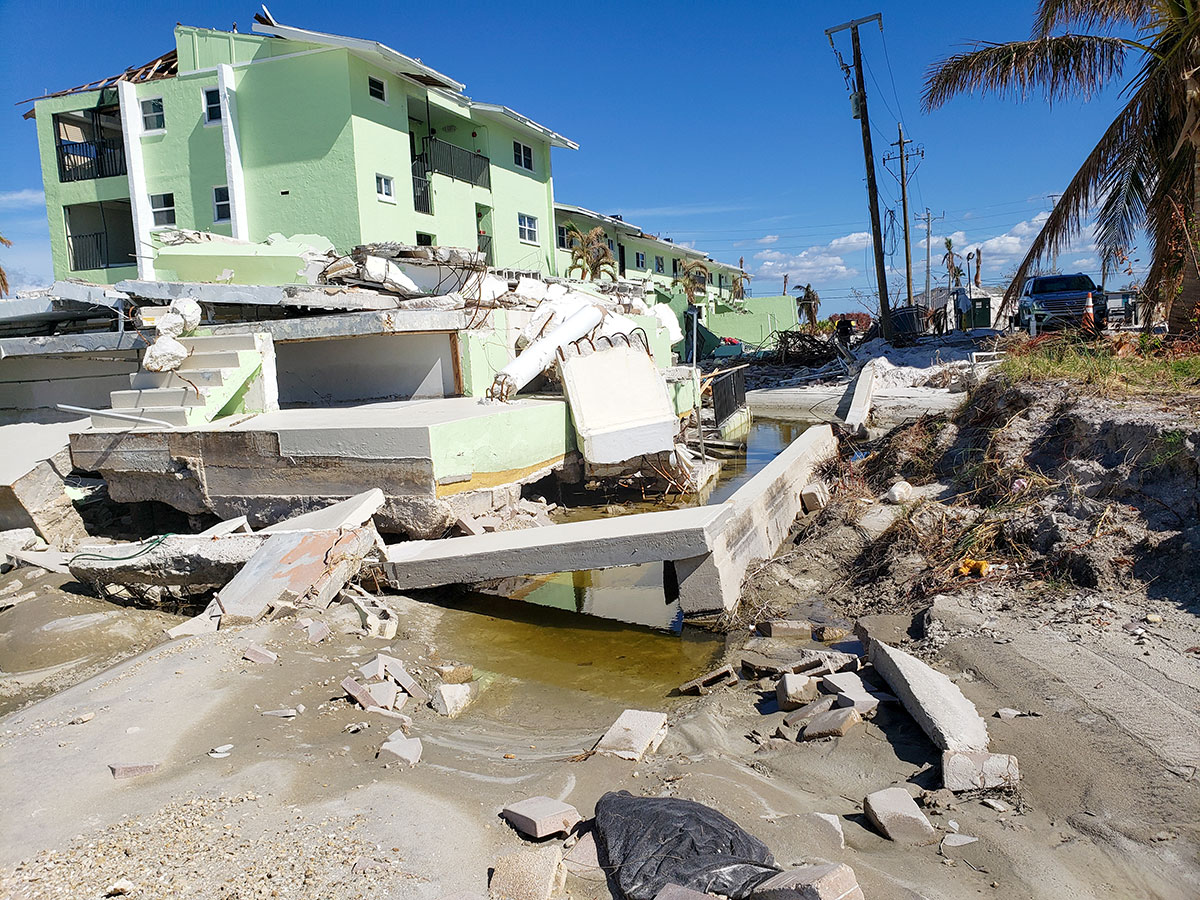
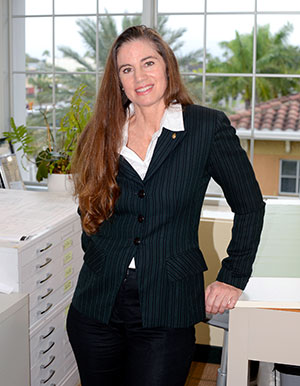
VOLUNTEERS SOUGHT
Volunteering on the Gulf Coast was part of that activism for Slack. Reality had crept in for local administrators and government officials recognizing that the amount of building inspections required far exceeded their staff’s capacity. Thousands of buildings had been laid to waste by Ian, and each one had to be inspected.
Slack completed the safety assessment training two years ago. And when the call came to lend her expertise, she wasn’t surprised, but she was ready.
“I had been expecting it,” she says.
Slack worked under the direction of the Army Corps of Engineers, which had just reconstructed washed away portions of the causeway out to Sanibel. Slack was stopped there momentarily and then credentialed across onto the island where access was still restricted.
AIA’s SAP training readies architects, licensed engineers and building inspectors to do rapid or more detailed building safety assessments following a natural disaster. Begun in the wake of the 1989 San Francisco Bay area Loma Prieta earthquake, the program was fine-tuned after the 1994 Northridge quake.
“There’s always been a relationship between building structures and natural disasters,” Slack says. “And there have been a few points in my life where that message was driven home.” She had completed her education at the University of Miami School of Architecture in 1992 just two months before Andrew hit.
On Sanibel, she and the others were placed into teams of two or three with architects, inspectors and structural engineers. “We put on our hard hats, safety vests and boots, loaded apps on our phones and went out into the field,” Slack says.
The Army Corps of Engineers has developed mobile apps in which all the pertinent information, including photographs obtained by these assessment crews, could be uploaded and digitally tallied. Thus dramatically shortening the evaluation time and allowing officials to act quickly.
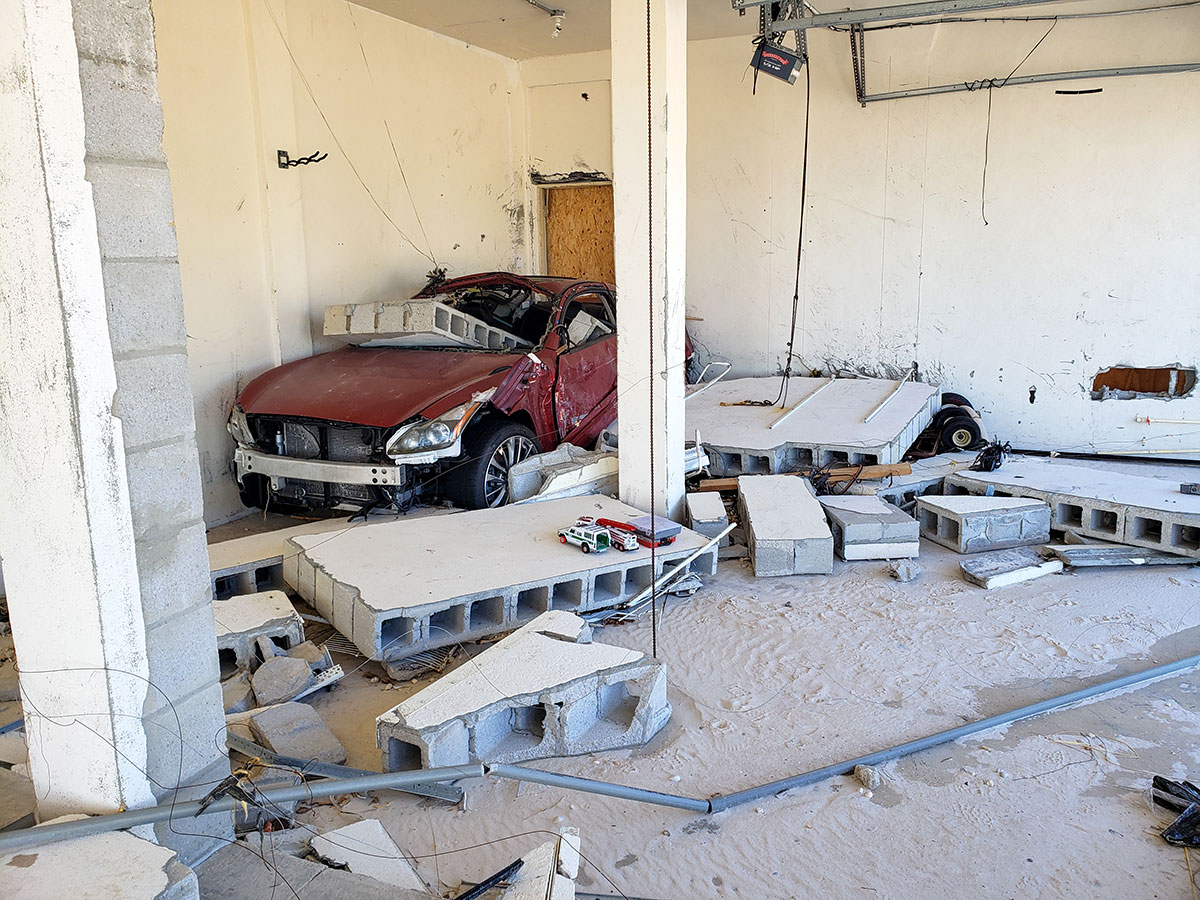
DEVASTATION OVERWHELMING
On Sanibel, Slack found a level of devastation outside her previous experience.
“It was definitely worse,” Slack says. “Storm surge is a destruction level beyond that of wind. Water carries so much greater power, that force brought to bear on a building structure is catastrophic.”
For a week, Slack and her colleagues evaluated Sanibel and Fort Myers Beach buildings. At one site address, they found nothing there. A neighbor pointed down the road.
“The entire house had been picked up and plunked into the canal,” Slack says.
The disturbing scenes weren’t only visual.
“I’d expected to see mass destruction but the smell of rotting seaweed, salty sand, and building debris, and honestly, the residue of sewage was something else,” she recalls.
Cars and boats were piled up on one another. In one garage, a parking job required deductive powers to work out a puzzle. What appeared to be an Infinity G37 had been spun sideways.
“The only way it could end up there,” Slack says, “is if the wave picked it up on its end, turned it, wrapped it around a column inside the garage and then set it back down. And just for good measure, the water’s force tossed a chunk of concrete block wall through the windshield.”
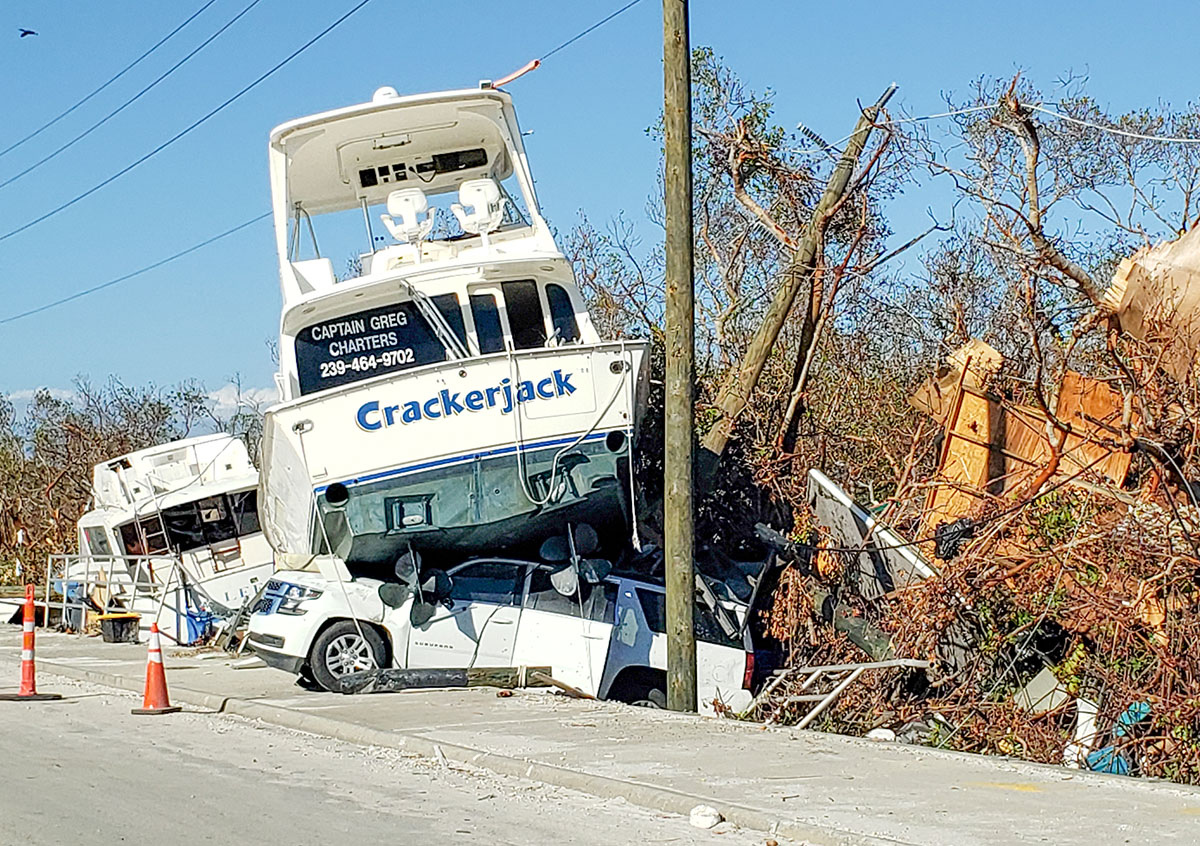
ASSESSING THE DAMAGE
The inspection work included a color-coded grading system. Green was all clear, people could enter. Yellow was restricted use, which might have meant the electrical system has to be replaced or there were other structural issues and hazards, like missing railings. And then there’s Red: a completely unsafe building where no one was allowed to enter under any circumstances.
The assessments were loaded into the mobile apps and the Corps of Engineers made adjustments, such as assuring an address matched the GPS marking to accurately identify the property. The information was summarized in a report and given to the local building department officials who then placed color-coded placards on each building indicating the grade.
“There is also a section within the app for verbatim comments that will be noted word for word on the placard,” Slack says. “You have to be very clear what you’re saying, what’s safe, what’s not, where to stay out.”
The Corps of Engineers’ work was impressive, according to Slack. The agency brought in people from as far away as Seattle and Honolulu. It also supplied Starlink units, a low earth-orbit broadband internet delivery system that boosted cell phone capacity.
“When you’re uploading all these photos and reports you have to have mobile service,” Slack says. “The Army Corps made sure we had all the tools we needed and were constantly upgrading based on our daily debriefings.”
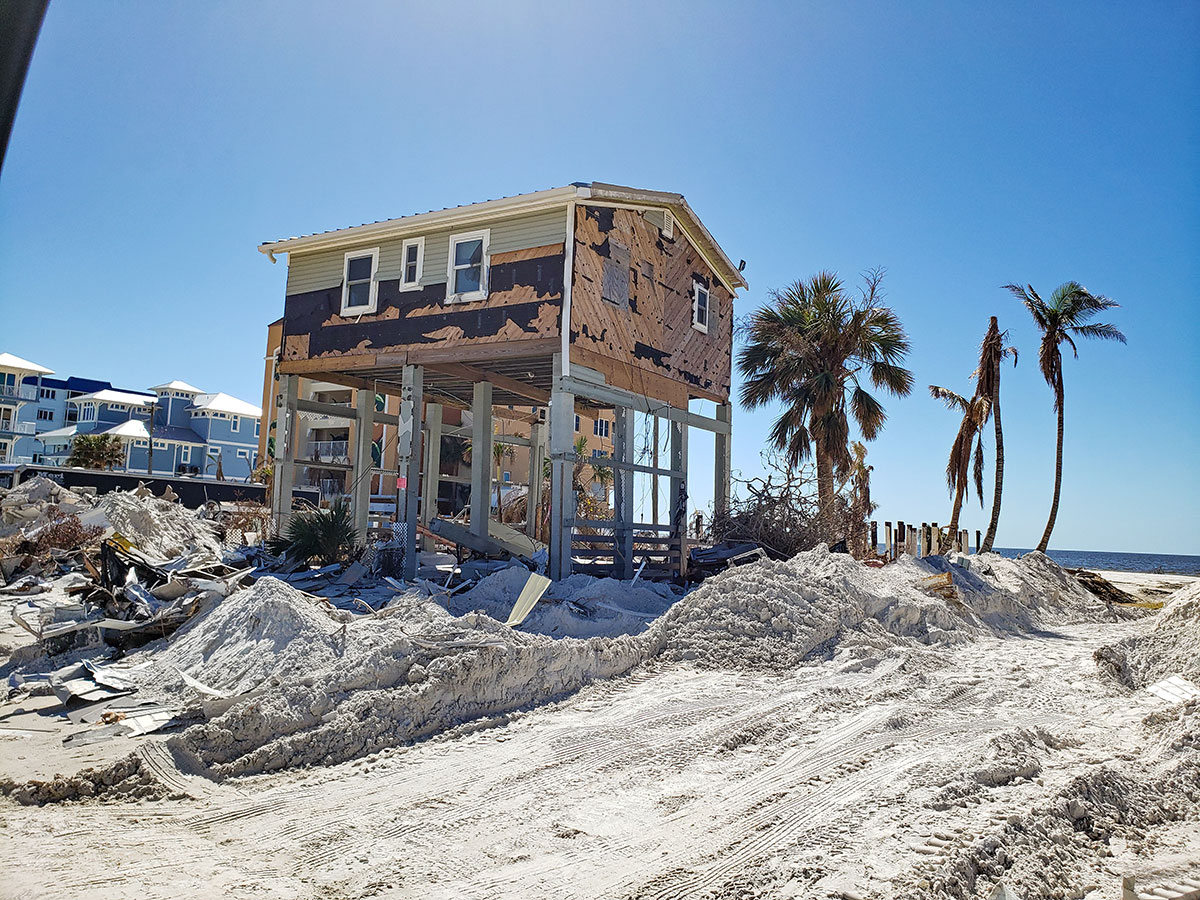
BUILDING A CAREER
Slack’s architecture path began in childhood. Always interested in building, she’d rearrange the rooms in a dollhouse and sketch out floor plans. In elementary school, she designed a tree fort in her back yard.
After receiving her architecture degree, she joined the prestigious Boston firm of Shepley Bulfinch Richardson & Abbott Inc. And later while working with firms in Los Angeles and Denver, she helped design and build large scale projects in Southeast Asia, Malaysia, Cairo and the Philippines, among other locations.
Slack’s Fort Pierce firm, Native Design Architecture LLC, takes on the types of projects that have always interested her most — sustainability and resilient design. And she’s working toward AIA’s 2030 challenge, which states, “All new buildings, developments, and major renovations shall be carbon-neutral by 2030.”
As a native Floridian, Slack emphasizes environment. “To reduce our buildings’ carbon footprint and help minimize climate change, sea level rise, all of that, it all spins back to Florida,” she says. “Not only is sea level rise an issue, but sea surface temperatures contribute to more frequent and more powerful hurricanes.”
Her work during Ian disaster relief is in step with a sustainability philosophy. Look after the planet, and after each other.
“The beautiful things about natural disasters,” she says, “is that you get to see the good side of humanity in the aftermath. People coming together to help rebuild, take care of one another, to do what has to be done.”
Architecture should improve the quality of life and make the environment more sustainable.
“It’s our professional responsibility to protect health, safety and welfare of the public through the buildings we build,” Slack says.
These responsibilities also include lobbying for improved building codes and inspection processes. “This ensures that something like the Champlain Towers doesn’t happen again,” she says, referring to the 1981 vintage Miami area condo building that collapsed in June 2021 killing 98 people.
Slack’s Hurricane Ian recovery work also brought her full circle with her family history.
Her great-grandfather, Robert Clark, who was a surveyor for the Town of Venice, laid out the city in the 1920s and ’30s. While out in the field, Clark was caught in a ferocious storm, forcing him to take shelter under his truck. The winds were so strong they blew off the vehicle’s roof. With no modern weather forecasting, he couldn’t have known he was facing the great Miami hurricane of 1926, which, as a Category 4 storm, devastated Miami and then crossed the state, creating havoc on Venice and Fort Myers and the gulf.
Ninety-six years later, Valerie Slack traversed nearly the exact same landscape as her great-grandfather and, just as he had, experienced the wrath of a devastating Florida hurricane.
See the original article in print publication
May 2023
